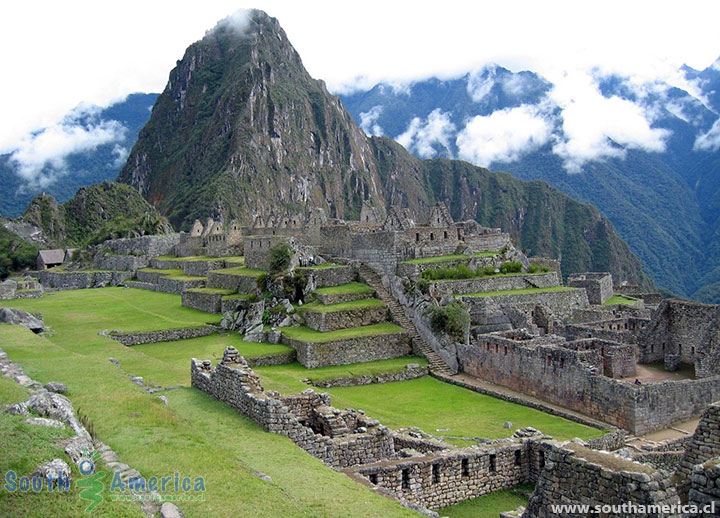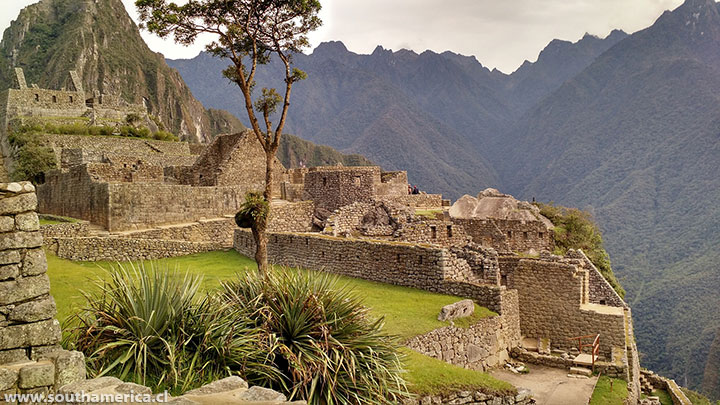Machu Picchu
Peru

Admission
The prices to enter are steep; although it isn't shocking considering that it is the greatest of the Inca ruins and Peru's showcase to the world. If you have a student card of any kind be sure to use it for the large discount (even an expired one made it through). The entrance fee only lasts for the day, although during the full moon in the dry season it is possible to buy the nocturnal ticket. Camping in Machu Picchu however is not an option. Large packs are also not allowed into the park so trekkers are forced to leave them in a secure place (and pay for it) before entering. While food is technically not allowed in the park we had no problem brining in water bottles and maybe a few crackers that were missed in the not so thorough bag check.
It is possible to buy an all inclusive ticket that includes a roundtrip train and bus ticket from Cusco as well as the entrance fee and an English speaking tour guide. But, this severely limits your time among the ruins to 2 or 3 hours and makes hikes to some of the other close-by sights impossible.
When to Go
If you plan your trip either very early or late in the day you will miss the majority of the crowds. Most guided tours take place from 10am to 2pm.
The peak season runs from June to August. This is especially important if you are taking the Inca trail to arrive to the ruins.
Of course there are also certain festivals that pack in the tourists before dawn.
History
Hiram Bingham III is credited with the rediscovery of Machu Picchu and bringing it back to the world. A historian and lecturer from Yale, he devoted much of his career to discovering the artifacts of the ancient Incan empire and writing about his discoveries. He of course did not actually rediscover it, as local Quechuans has been visiting and even living there for years. There was also a Christian missionary, Thomas Paine, who had been living in the area and helped Bingham to locate the lost city, although Bingham never gave him any credit.
The professor wrote several books on the subject which were all published around the world and exposed the lost city to the world. Since that time it has never ceased to amaze visitors who flock by the thousands to Machu Picchu.
Bingman can also be thanked for his work in clearing the site of overgrown foliage that had consumed the ruins for years. He spent 3 years with a team of workers clearing away the vegetation and mapping out the ruins. He also discovered some of the smaller ruins on the Inca trail along the way.
While Machu Picchu is by far the largest and greatest of all known Incan ruins, it is also the most mysterious. Little is known about the true nature of the city, or how it functioned as a sacred sight and city.
It was never discovered by the Spanish conquerors, even after capturing and taking over Cusco.
Some theories believe that Machu Picchu was by in large abandoned by Inca royalty before the Spanish came, but other researchers contend that it was being used as a countryside palace, as a way for the royals to escape from chaotic Cusco. The time of its construction is also debatable.
The belief that it was built as a fortress or citadel is unlikely. While it is difficult to reach high up in the mountains, the structures hardly lend themselves to defense.
The Main Ruins
The Hut of the Caretaker: The building is easy to identify as it is separated from most of the other buildings and has a thatched roof that has been restored to show the traditional Inca method. It is thought that the large rock behind the building was once used for the mummification process. The hut is located above the park entrance and is a classic place from which tourists take pictures, capturing the entire city. It is a great place to hang out if it starts to rain on your visit.
Temple of the Sun: This building is easy to pick out among the rest of the ruins as it is the only rounded structure in Machu Picchu, and one of the few round buildings in all of Incan construction. You cannot actually enter the building, but you can get a good look inside from above. They believe that the building was used by Incan astronomers.
Royal Tomb: Although they never found any mummified bodies here, this area has been given the name royal tomb probably because it has been carved from a natural cave that has beautiful carvings, carefully placed niches and an altar.
Sacred Plaza: Here surrounded by the most important buildings and with terracing below you, you have a great view to look out into the mountains and the river running far below. The following three temples flank the sacred plaza on the other sides, and two open up into the plaza itself.
Temple of the Three Windows: This temple backs up to the middle green pasture, or central plaza. Little is known about its specific purpose, it is named for the three trapezoidal windows located on the same wall.
Principal Temple: It has suffered from ground settling, a major problem here, partially due to the mass amounts of crowds that tramp all over the mountain. The actual architecture and construction of the building however is considered one of the greatest buildings.
House of the High Priest: Just across the way from the Principal temple you can find the house of the high priest. It isn't clear exactly if the priest(s) lived here during certain holy periods, or what the actual tradition was. It is also one of the great solid structures built here, and of course unlike two temples in the sacred plaza it has four complete walls.
Sacristy: Here you will notice that the Inca's carefully planned by carving niches for storing ceremonial objects. More impressive though are the two large rocks flanking the entrance, try counting all of the angles that have been cut into each rock!
Intihuatana: This is far better than your average sundial, the Incas used this pillar to predict solstices using the angles of the rock and track the seasons. It seems that this was not the only one of its kinds, with several of these pillars located in many ancient Incan ruins, although most were smashed by the Spanish Catholics who considered this sun worship unholy. It is still unclear exactly how the Inca's used the pillar. The name means "place where the sun is bonded."
Central Plaza: This large green area separates the functional buildings or the residential and industrial sectors from the sacred area. It is here where you will find several llamas grazing. Generally they ask that you don't walk over this area.
Prison Group: Here are small complex passageways and cells where prisoners were once kept. They held captives here both above and under ground, including a deep hole with a door at the bottom to a cell. Be sure not to miss the carving of a Condor head located just outside of this hole.
Industrial and Residential Sectors: This is the largest section of the area, although perhaps the least interesting, and it of course is not as well constructed as the sacred sights. It is fun to walk around here and imagine the life of an average Incan living in Machu Picchu.
Cemetery: 135 bodies were found here, with a majority being female, thus many archeologists believed that either these were chosen women who lived here, or women who escaped the attacks of the Spanish in Cusco and fled to the undiscovered city. These theories died out as the count of male bodies to female bodies evened out a bit more with testing and further research.
Huayan Picchu: To begin this steep trail you must go to the far end of the city from the main entrance near the sacred rock. Depending on how quickly you climb it will take you approximately an hour. It is worth all that walking to make it to the top where you have a spectacular view. There will be a guard at the beginning of the trail that will ask you to sign in, so that all guests can be accounted for, and must all return by 4pm. Off this trail you can take a much more difficult one to the Temple of the Moon. The ruins are constructed perfectly but today are covered in graffiti. This extra trip will cost you at least 2 hours of time there and back and involves a lot of ups and downs and even going up a ladder and bending around tight walkways along the edge. Not recommended if you haven't done a lot of hiking recently.
Inca Drawbridge: Off from the caretaker's hut there is a short hike that is generally level and takes approximately 20 minutes. It is a nice way to get away from the crowds and have a different view of Machu Picchu, although the trek's view is generally blocked by vegetation. The small bridge can be viewed from a rock jutting out along the trail approximately 100m away. It is impassible today. Watch your step; the trail is narrow and hugs the edge of the mountain.
Intipunku: You should only take this trail during the morning, as there is a checkpoint that closes at 3pm. It is located back the way you come from the Inca trail, the hike takes about an hour to the ruins whose name translated means Sun Gate.

Fun Trivia:
There are llamas throughout the park still today. They actually help to maintain the park by eating the grass and getting into locations that a lawnmower would be unable to go. The best part is you can get your picture taken with one here and you don't need to pay the way you would back in Cusco.
On your way back down the hill if you go in bus look out for one of the local little boys who will "race you" down the mountain. Although he does take a shorter more direct route it is still an impressive sprint. You may ask yourself why he does this... for tips of course. After getting off the bus you are expected to tip him a small coin as a token of your appreciation for his "entertainment."
If you found this guide about Machu Picchu, Peru interesting or useful, let others know about it.




